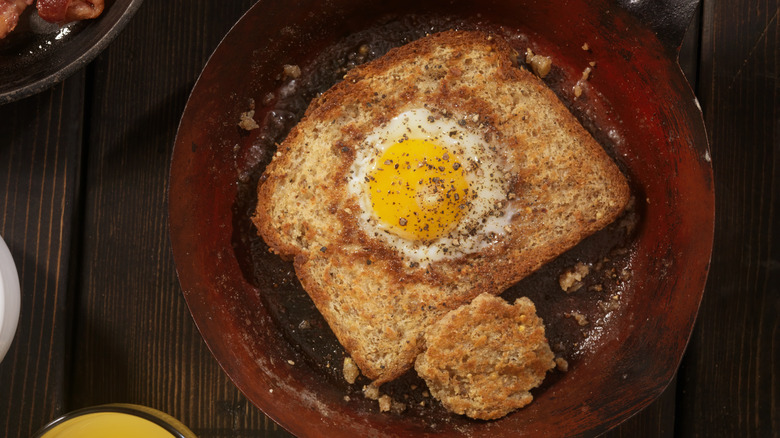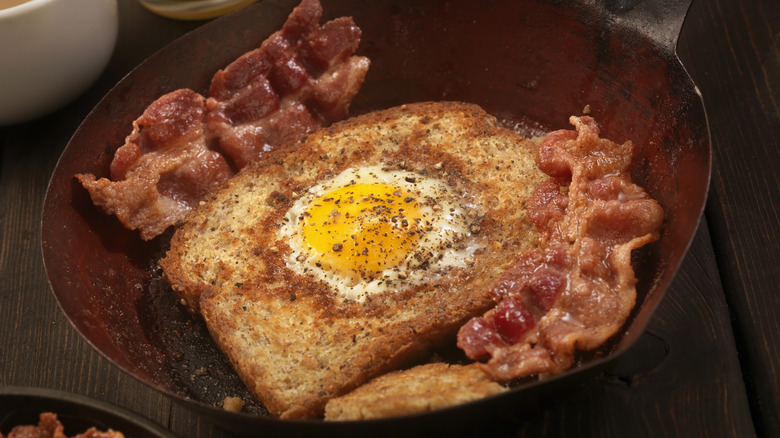What Are Hobo Eggs, And How Did They Get That Insensitive Name?
Hobo eggs can sound like a deceptive food name, but it's one of many names for a sunny-side egg fried in buttered bread with a hole cut out. A delectable combo of two iconic breakfast favorites, "hobo eggs" is a moniker from the past that today can be interpreted as insensitive to itinerant people. The first mention of its recipe appeared in 1896 in Fannie Farmer's influential cookbook, "The Boston Cooking-School Cookbook," which Farmer dubbed "eggs in a hat."
Slightly different from a modern recipe for egg-in-a-hole, Farmer's "hat" was a previously fried egg perched atop the cut-out bread rather than cooked inside its precise two-and-a-half-inch circle. With an influx of Italian immigrants, an Italianate version with tomatoes and peppers appeared, called "uova fritte nel pane" (fried eggs in bread), later to be featured in the film "Moonstruck." As it turns out, movies have been fairly influential in the renaming of the objectionable "hobo eggs."
In the 1935 film "Mary Jane's Pa," actor Guy Kibbee prepares the dish, which he calls a "one-eyed Egyptian sandwich," but because Kibbee was popular at the time, the dish was called instead "Guy Kibbee eggs." In the 1941 musical "Moon Over Miami," they're referred to as "gashouse eggs" and then later morphed into the title of the film. They also show up in "V for Vendetta" and as "eggs a la Eddie" in the sitcom "Friends." The dish has at least 66 names, but there's no clear-cut evidence as to why they were called hobo eggs to begin with.
The origin story of hobo eggs is mysterious
We need to dig into the past to figure out the possible reasons why Fannie Farmer's original recipe came to be known as hobo eggs. By modern standards, "hobo" is a derogatory description of a homeless person, but in the 19th century, it referred to an independent free spirit who traveled from train stop to train stop to seek out work. The etymology of hobo is still a mystery. It may have come from "hoe boy" for a traveling worker who carried a hoe, or for a "homeward bound" Civil War veteran, or even for a simplified greeting of "hello, boy." With the construction of the railroad, more men took to the trains to find a better life, and then during the Depression, the hobo population increased again with men who would work for food.
But on their travels, food was often scarce, and the hobos would make do with what they could forage, cobbling together a meal that was cooked over a fire wherever they set up camp. Even today, a foil-packet meal cooked on a grill or campfire is known as a "hobo dinner." So it doesn't take much speculation to connect the dots between hobo dinners and hobo eggs. There are several ways to cook eggs, and if you want to try your hand at adapting Farmer's recipe, there's actually a measurement you need to prepare it perfectly. Call it what you will – hobo eggs is an American classic.

